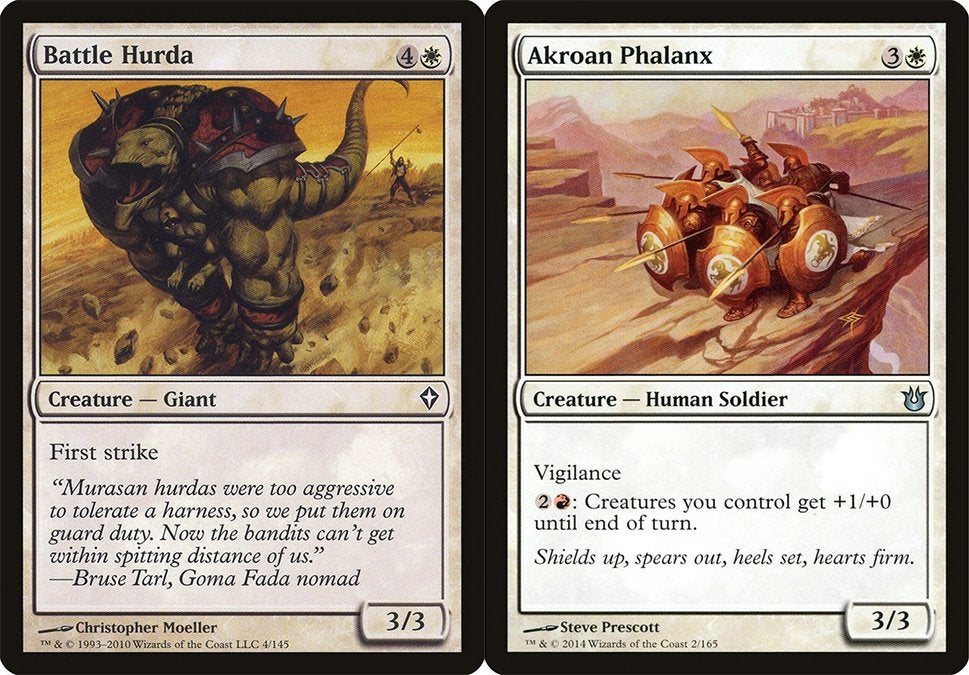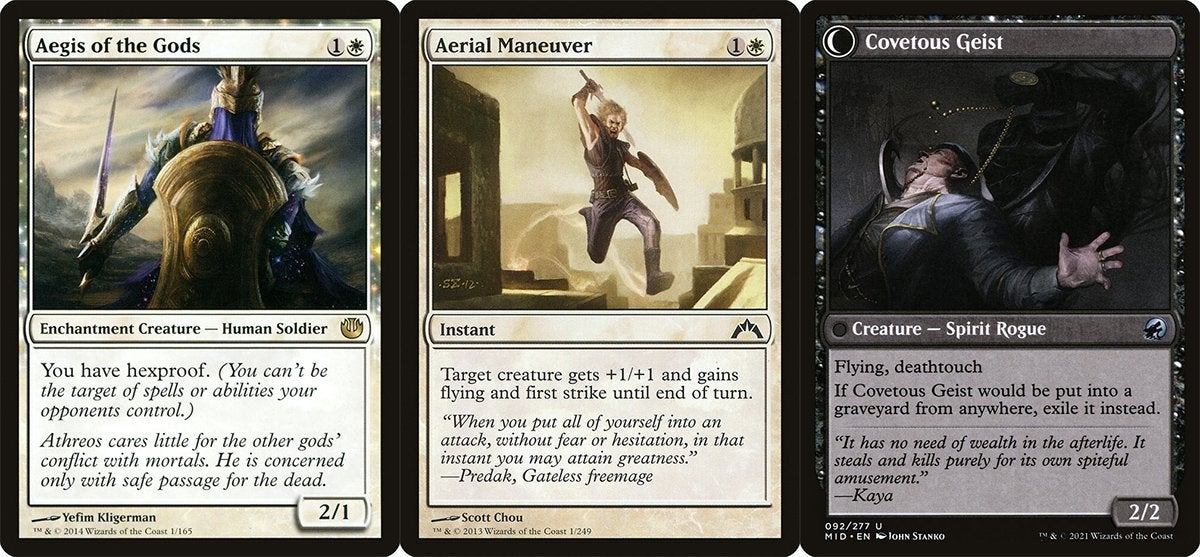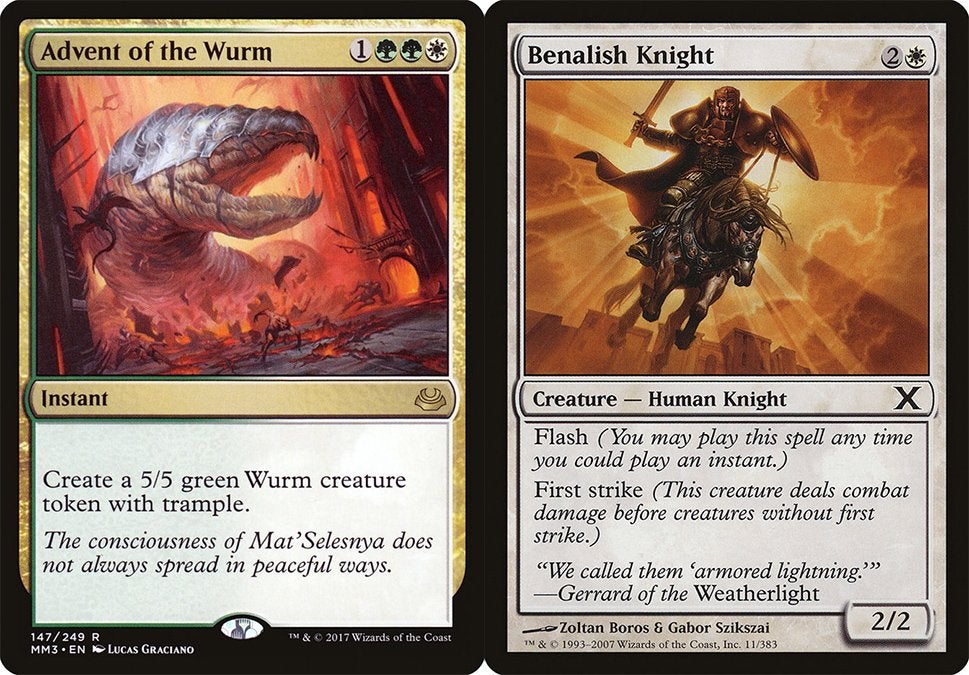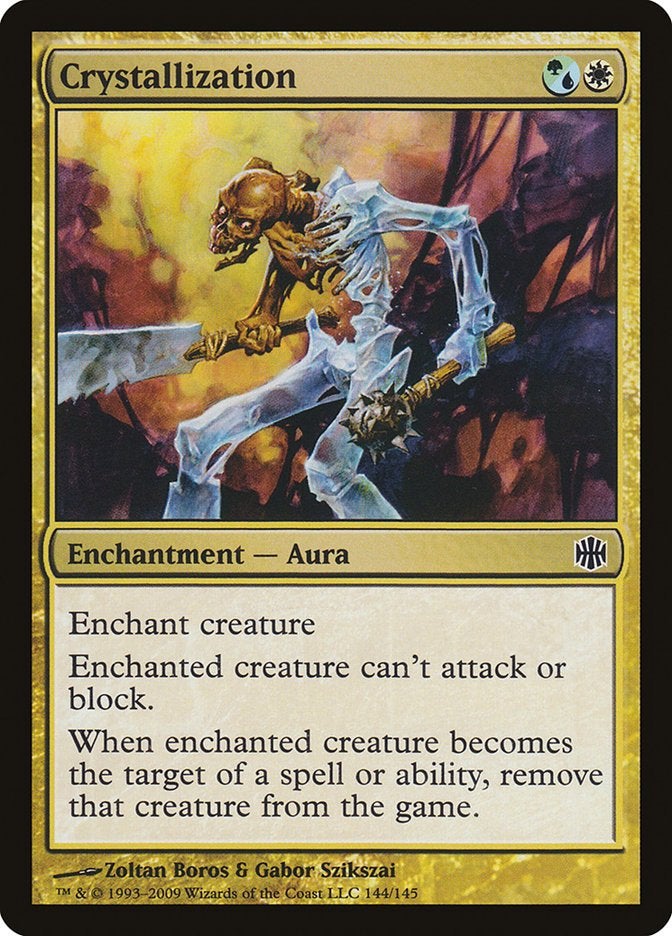![]() Key Takeaway
Key Takeaway
First Strike in Magic: The Gathering is a static keyword that causes creatures with this ability to deal combat damage before creatures without First Strike. The best way to use it is to press the attack or to defend against threats.
However, since most First Strike creatures have fairly low power and toughness, you can block them with creatures that have higher toughness. Alternatively, to counter First Strike creatures, you can also enchant them so that they can’t attack or block.
If you want to prevail in combat, First Strike in Magic: The Gathering is a powerful weapon you can use. Creatures with this ability are a formidable force that can defeat enemy creatures without sustaining damage in some cases.
Table Of Contents
What Is First Strike?
First Strike in Magic: The Gathering is a static keyword that causes creatures with this ability to deal combat damage before creatures without First Strike (or Double Strike). This is done through the creation of another combat damage step within the combat phase. Before we get into the details of that, we’ll break down the combat phase.
The combat phase usually consists of the following five steps:
- Beginning of the Combat Step
- Declaring Attackers Step
- Declaring Blockers Step
- Combat Damage Step
- End of Combat Step
If there’s a creature with First Strike or Double Strike attacking or blocking, the combat phase gets modified to possess two combat damage steps—like this:
- Beginning of the Combat Step
- Declaring Attackers Step
- Declaring Blockers Step
- First Combat Damage Step (First Strike and Double Strike creatures deal damage)
- Second Combat Damage Step (creatures without First Strike, and Double Strike creatures, deal damage)
- End of Combat Step
When a creature with First Strike (or Double Strike) is involved in combat, it deals its combat damage during the newly created first combat damage step. After that, during the second combat damage step, non-First Strike creatures (and those with Double Strike) deal damage.
An Example of How First Strike Works
Let’s say you control a Battle Hurda and your opponent controls an Akroan Phalanx. During the combat phase, you attack with Battle Hurda, and your opponent blocks with Akroan Phalanx. Although both these creatures have 3 power and 3 toughness each, your Battle Hurda deals combat damage first and destroys Akroan Phalanx without taking damage.

Battle Hurda deals its damage during the first combat damage step. As such, its 3 power decreases the blocking Akroan Phalanx’s 3 toughness down to 0. This results in Akroan Phalanx getting destroyed at the end of the first combat damage step.
Since it gets destroyed during the first combat damage step, Akroan Phalanx doesn’t get a chance to deal its damage to Battle Hurda during the second combat damage step. Even if your opponent triggers Akroan Phalanx’s ability to raise its power by 1, it won’t do anything. It’ll actually hurt them since they’ll waste this mana on a pointless action.
How to Use First Strike
The best ways to use First Strike in Magic: The Gathering are to press the attack or to defend against threats. Since First Strike creatures can avoid taking damage if they destroy a creature, it’s a great way to get around Deathtouch and other dangerous abilities.
Alternatively, if you’re low on life points and can’t risk taking damage, defending yourself during your opponent’s turn with First Strike creatures can be a great stalling tactic.
Using First Strike Offensively
In the above example, we demonstrated how to use First Strike to attack effectively. However, that was in a situation where your opponent felt that they needed to block (maybe they were low on life points). As such, they shielded themselves with a creature to avoid losing life points.
This won’t always be the case. Sometimes your opponent will purposely lose life points from this kind of attack to avoid the destruction of an important creature.
Your attacking creature gets tapped and won’t be able to block during your opponent’s next turn. As such, if you don’t have any other creatures, your opponent will be able to attack you directly during their turn.
For this reason, you need to weigh how useful attacking is in a given scenario. Ask yourself these questions before committing to an attack:
- “Is it worth trading damage?”
- “Will my opponent take advantage of my lack of potential blockers?”
- “How much damage can my opponent do to me during their next turn?”
If you have fewer life points than your opponent, it’s usually not a good idea to trade damage. You only want to commit to an attack if you can gain an advantage.
Leaving yourself vulnerable is never a good idea. Against certain decks, you may have to deal with creatures that have Haste or can gain it. Therefore leaving yourself without any blockers can lead to you losing life points—or even the game.
Using First Strike Defensively
Besides using creatures that naturally have First Strike, you can give a creature First Strike with instants, sorceries, and enchantments. This can be a great way to trick your opponent into attacking you. In turn, this type of tactic can let you destroy one of their creatures.
Let’s say that you control an Aegis of the Gods and your opponent controls a Covetous Geist while you have an Aerial Maneuver in your hand. Normally, you can’t block Covetous Geist without a creature that has Flying. However, even if you did, it would get destroyed due to Covetous Geist having Deathtouch.
Aerial Maneuver can help you get around this if you cast it before the declaring blockers step of the combat phase—if your opponent attacks.

Your opponent declares an attack, so you cast Aerial Maneuver and target Aegis of the Gods. Your creature now has a +1/+1 counter, Flying, and First Strike. Thanks to gaining the Flying ability, you can now use Aegis of the Gods to block Covetous Geist.
Furthermore, since your creature now has First Strike as well, it deals damage to Covetous Geist and destroys it before taking any damage. In the end, Covetous Geist does not deal damage, so Deathtouch’s effect doesn’t get triggered.
How to Counter First Strike
For the most part, creatures with First Strike tend to have relatively low power and toughness. On average, such creatures have 2 or 3 power. There are definitely higher-power creatures with First Strike, but they aren’t nearly as common and cost much more mana to cast. This makes them somewhat easy to block.
Or, instead, you can debilitate a First Strike creature with an enchantment of some kind.
Blocking First Strike Creatures
Due to the low average power of creatures with First Strike, you can block them fairly easily with creatures that possess 4 toughness or more.
Let’s say your opponent declares an attack with a Benalish Knight while you have Advent of the Wurm in your hand. If you cast Advent of the Wurm before the declaring blockers step, you can use the 5/5 Wurm creature token to block and destroy your opponent’s Benalish Knight.

Crippling First Strike Creatures With Enchantments
Since First Strike creatures are only dangerous during combat, you can completely nullify them through effects that stop creatures from attacking or blocking. There are quite a few enchantment cards out there that let you do so for very little mana. A great example of this is Crystallization.

Using First Strike in Magic: The Gathering can let you gain advantages in combat. If you cast enough creatures with this ability early on, you can dominate the battlefield. Moreover, if you give your First Strike creatures complementary abilities—such as Hexproof—you can use them to even greater effect. Strike fast and strike hard, planewalkers!


